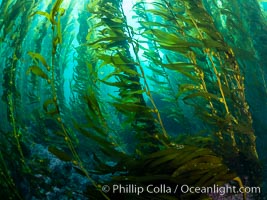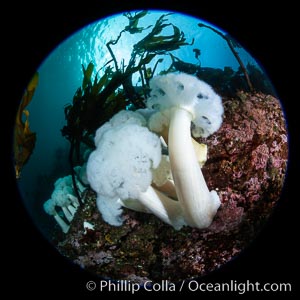
Giant Plumose Anemones cover underwater reef, Browning Pass, northern Vancouver Island, Canada.
Species: Giant plumose anemone, Metridium farcimen
Location: British Columbia, Canada
Image ID: 35343
Species: Giant plumose anemone, Metridium farcimen
Location: British Columbia, Canada
Image ID: 35343
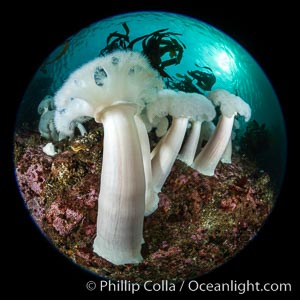
Giant Plumose Anemones cover underwater reef, Browning Pass, northern Vancouver Island, Canada.
Species: Giant plumose anemone, Metridium farcimen
Location: British Columbia, Canada
Image ID: 35344
Species: Giant plumose anemone, Metridium farcimen
Location: British Columbia, Canada
Image ID: 35344
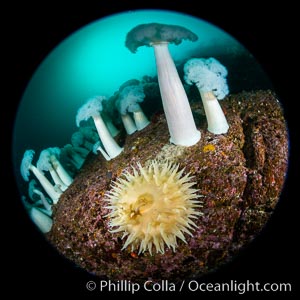
Giant Plumose Anemones cover underwater reef, Browning Pass, northern Vancouver Island, Canada.
Species: Giant plumose anemone, Metridium farcimen
Location: British Columbia, Canada
Image ID: 35346
Species: Giant plumose anemone, Metridium farcimen
Location: British Columbia, Canada
Image ID: 35346
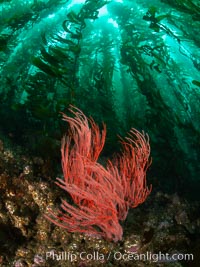
Red gorgonian on rocky reef, below kelp forest, underwater. The red gorgonian is a filter-feeding temperate colonial species that lives on the rocky bottom at depths between 50 to 200 feet deep. Gorgonians are oriented at right angles to prevailing water currents to capture plankton drifting by.
Species: Red gorgonian, Leptogorgia chilensis, Lophogorgia chilensis
Location: Santa Barbara Island, California
Image ID: 35825
Species: Red gorgonian, Leptogorgia chilensis, Lophogorgia chilensis
Location: Santa Barbara Island, California
Image ID: 35825
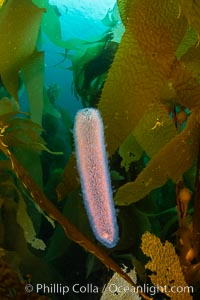
Pyrosome in Kelp Forest, Santa Barbara Island.
Species: Pyrosome, Pyrosoma
Location: Santa Barbara Island, California
Image ID: 35826
Species: Pyrosome, Pyrosoma
Location: Santa Barbara Island, California
Image ID: 35826
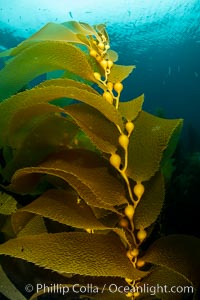
Kelp fronds showing pneumatocysts, bouyant gas-filled bubble-like structures which float the kelp plant off the ocean bottom toward the surface, where it will spread to form a roof-like canopy.
Location: Santa Barbara Island, California
Image ID: 35827
Location: Santa Barbara Island, California
Image ID: 35827
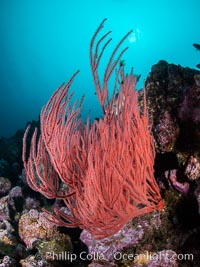
Red gorgonian on rocky reef, below kelp forest, underwater. The red gorgonian is a filter-feeding temperate colonial species that lives on the rocky bottom at depths between 50 to 200 feet deep. Gorgonians are oriented at right angles to prevailing water currents to capture plankton drifting by.
Species: Red gorgonian, Leptogorgia chilensis, Lophogorgia chilensis
Location: Santa Barbara Island, California
Image ID: 35828
Species: Red gorgonian, Leptogorgia chilensis, Lophogorgia chilensis
Location: Santa Barbara Island, California
Image ID: 35828
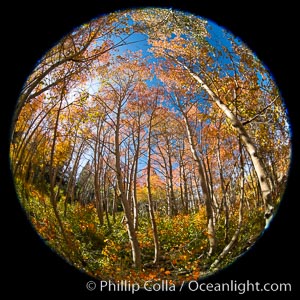
Aspen grove, Dunderberg Meadows, eastern Sierra Nevada.
Location: Sierra Nevada Mountains, California
Image ID: 35835
Location: Sierra Nevada Mountains, California
Image ID: 35835
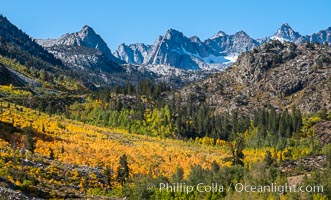
Aspen trees cover Bishop Creek Canyon above Aspendel.
Location: Bishop Creek Canyon, Sierra Nevada Mountains, California
Image ID: 35836
Location: Bishop Creek Canyon, Sierra Nevada Mountains, California
Image ID: 35836
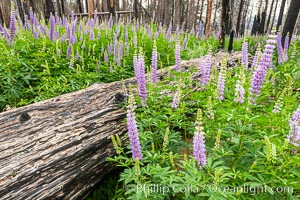
Lupine bloom in burned area after a forest fire, near Wawona, Yosemite National Park.
Location: Yosemite National Park, California
Image ID: 36367
Location: Yosemite National Park, California
Image ID: 36367
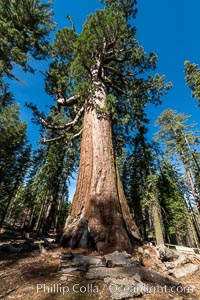
The Grizzly Giant Sequoia Tree in Yosemite. Giant sequoia trees (Sequoiadendron giganteum), roots spreading outward at the base of each massive tree, rise from the shaded forest floor. Mariposa Grove, Yosemite National Park.
Location: Mariposa Grove, Yosemite National Park, California
Image ID: 36401
Location: Mariposa Grove, Yosemite National Park, California
Image ID: 36401
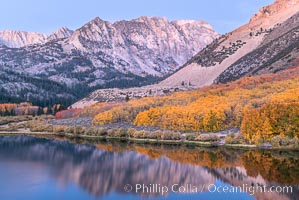
Sierra Nevada fall colors in soft predawn light, North Lake, Bishop Creek Canyon.
Species: Quaking aspen, Populus tremuloides
Location: Bishop Creek Canyon, Sierra Nevada Mountains, California
Image ID: 36431
Species: Quaking aspen, Populus tremuloides
Location: Bishop Creek Canyon, Sierra Nevada Mountains, California
Image ID: 36431
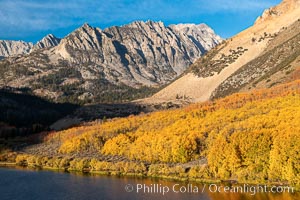
Paiute Peak, Aspen Trees and North Lake, fal colors, Bishop Creek Canyon.
Species: Quaking aspen, Populus tremuloides
Location: Bishop Creek Canyon, Sierra Nevada Mountains, California
Image ID: 36435
Species: Quaking aspen, Populus tremuloides
Location: Bishop Creek Canyon, Sierra Nevada Mountains, California
Image ID: 36435
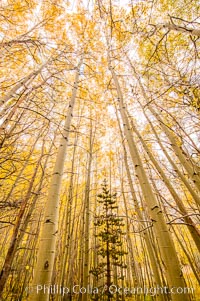
Quaking Aspen Trees, Sierra Nevada Fall Colors, Bishop Creek Canyon.
Species: Quaking aspen, Populus tremuloides
Location: Bishop Creek Canyon, Sierra Nevada Mountains, California
Image ID: 36443
Species: Quaking aspen, Populus tremuloides
Location: Bishop Creek Canyon, Sierra Nevada Mountains, California
Image ID: 36443
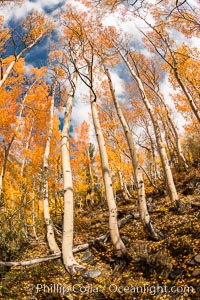
Aspen Trees and Sierra Nevada Fall Colors, Bishop Creek Canyon.
Species: Quaking aspen, Populus tremuloides
Location: Bishop Creek Canyon, Sierra Nevada Mountains, California
Image ID: 36447
Species: Quaking aspen, Populus tremuloides
Location: Bishop Creek Canyon, Sierra Nevada Mountains, California
Image ID: 36447
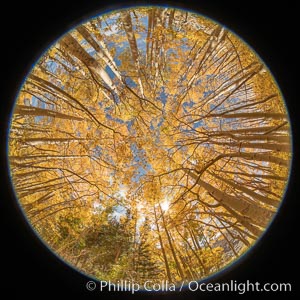
Aspen Trees and Sierra Nevada Fall Colors, Bishop Creek Canyon.
Species: Quaking aspen, Populus tremuloides
Location: Bishop Creek Canyon, Sierra Nevada Mountains, California
Image ID: 36450
Species: Quaking aspen, Populus tremuloides
Location: Bishop Creek Canyon, Sierra Nevada Mountains, California
Image ID: 36450
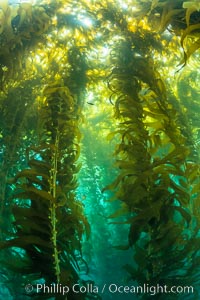
Sunlight glows throughout a giant kelp forest. Giant kelp, the fastest growing plant on Earth, reaches from the rocky reef to the ocean's surface like a submarine forest.
Species: Giant kelp, Macrocystis pyrifera
Location: San Clemente Island, California
Image ID: 37086
Species: Giant kelp, Macrocystis pyrifera
Location: San Clemente Island, California
Image ID: 37086
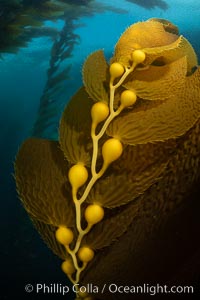
Kelp fronds and pneumatocysts. Pneumatocysts, gas-filled bladders, float the kelp plant off the ocean bottom toward the surface and sunlight, where the leaf-like blades and stipes of the kelp plant grow fastest. Giant kelp can grow up to 2' in a single day given optimal conditions. Epic submarine forests of kelp grow throughout California's Southern Channel Islands.
Species: Giant kelp, Macrocystis pyrifera
Location: San Clemente Island, California
Image ID: 37100
Species: Giant kelp, Macrocystis pyrifera
Location: San Clemente Island, California
Image ID: 37100
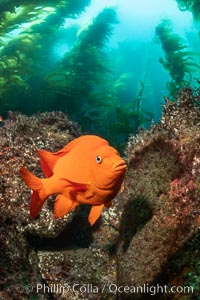
Garibaldi maintains a patch of algae (just in front of the fish) to entice a female to lay a clutch of eggs.
Image ID: 37144
Image ID: 37144
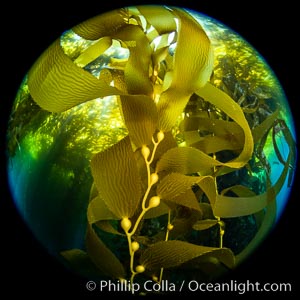
Kelp fronds and pneumatocysts, giant kelp forest, Catalina Island.
Location: Catalina Island, California
Image ID: 37193
Location: Catalina Island, California
Image ID: 37193
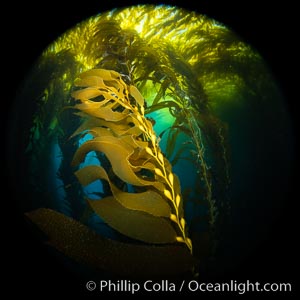
Kelp fronds and pneumatocysts, giant kelp forest, Catalina Island.
Location: Catalina Island, California
Image ID: 37199
Location: Catalina Island, California
Image ID: 37199
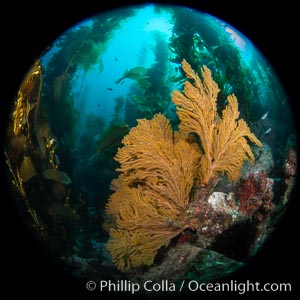
Golden gorgonian on underwater rocky reef, amid kelp forest, Catalina Island.
Species: California golden gorgonian, Muricea californica
Location: Catalina Island, California
Image ID: 37256
Species: California golden gorgonian, Muricea californica
Location: Catalina Island, California
Image ID: 37256
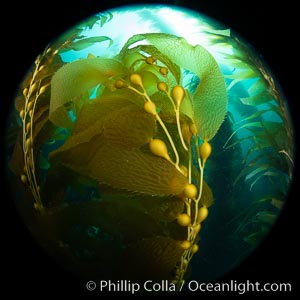
Kelp fronds and pneumatocysts. Pneumatocysts, gas-filled bladders, float the kelp off the ocean bottom toward the surface and sunlight, where the leaf-like blades and stipes of the kelp plant grow fastest.
Species: Giant kelp, Macrocystis pyrifera
Location: Catalina Island, California
Image ID: 37297
Species: Giant kelp, Macrocystis pyrifera
Location: Catalina Island, California
Image ID: 37297
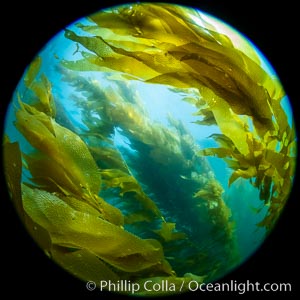
Giant Kelp Forest, West End Catalina Island.
Species: Giant kelp, Macrocystis pyrifera
Location: Catalina Island, California
Image ID: 37300
Species: Giant kelp, Macrocystis pyrifera
Location: Catalina Island, California
Image ID: 37300
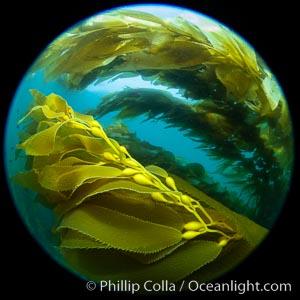
Giant Kelp Forest, West End Catalina Island.
Species: Giant kelp, Macrocystis pyrifera
Location: Catalina Island, California
Image ID: 37301
Species: Giant kelp, Macrocystis pyrifera
Location: Catalina Island, California
Image ID: 37301
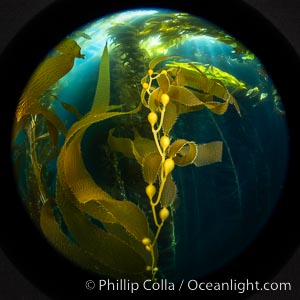
Giant Kelp Forest, West End Catalina Island, rendered in the round by a circular fisheye lens.
Location: Catalina Island, California
Image ID: 38480
Location: Catalina Island, California
Image ID: 38480
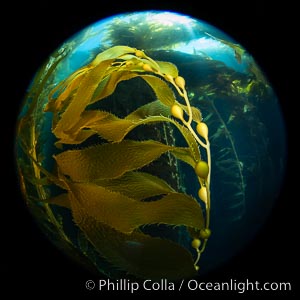
Giant Kelp Forest, West End Catalina Island, rendered in the round by a circular fisheye lens.
Location: Catalina Island, California
Image ID: 38481
Location: Catalina Island, California
Image ID: 38481
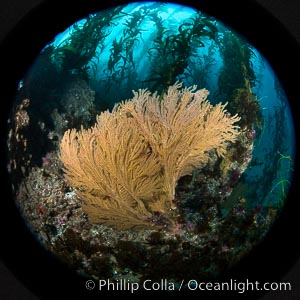
Garibaldi and California golden gorgonian on underwater rocky reef, San Clemente Island. The golden gorgonian is a filter-feeding temperate colonial species that lives on the rocky bottom at depths between 50 to 200 feet deep. Each individual polyp is a distinct animal, together they secrete calcium that forms the structure of the colony. Gorgonians are oriented at right angles to prevailing water currents to capture plankton drifting by.
Species: California golden gorgonian, Giant kelp, Muricea californica, Macrocystis pyrifera
Location: San Clemente Island, California
Image ID: 38501
Species: California golden gorgonian, Giant kelp, Muricea californica, Macrocystis pyrifera
Location: San Clemente Island, California
Image ID: 38501
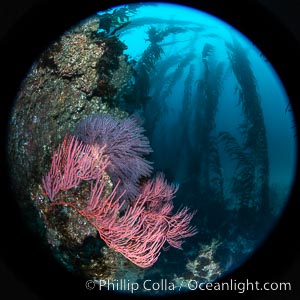
Red gorgonian on rocky reef, below kelp forest, underwater. The red gorgonian is a filter-feeding temperate colonial species that lives on the rocky bottom at depths between 50 to 200 feet deep. Gorgonians are typically oriented at right angles to prevailing water currents to capture plankton drifting by.
Species: Red gorgonian, Giant kelp, Brown gorgonian, Leptogorgia chilensis, Lophogorgia chilensis, Macrocystis pyrifera, Muricea fruticosa
Location: San Clemente Island, California
Image ID: 38502
Species: Red gorgonian, Giant kelp, Brown gorgonian, Leptogorgia chilensis, Lophogorgia chilensis, Macrocystis pyrifera, Muricea fruticosa
Location: San Clemente Island, California
Image ID: 38502
